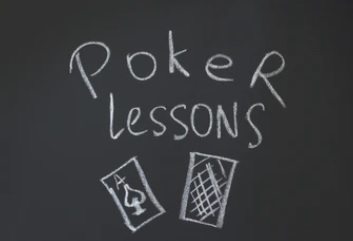This is the beginning of the Back to Basics series. The point of this series is to use basic EV calculations to examine basic concepts in more depth than a lot of players probably ever have before. You will have needed to work through the EV Calculations Tutorial series first before approaching this series since we’re going to use the method for making EV calculations that I have detailed there.
Implied Odds Are Underrated
When coming up with the first topic for this series, I asked myself the following question: “What is the basic concept that most players underrate in terms of importance?” I came up with implied odds.
For most people, when you think of implied odds, you think of calling with a chance of hitting a hand so that you can get paid off more than the current size of the pot on future streets. However, implied odds has a much broader set of applications than this. For example, if you make a semi-bluff, you’re often relying on implied odds to make your hand profitable. Along these lines, anything you do that takes into consideration favorable conditions for future betting can be considered to fall under the heading of implied odds.
For the sake of this column, we’re going to focus on calling scenarios and the things that you need to consider (that you probably aren’t considering well enough) when evaluating them.
The Basic Calling Example
We’re heads up, in position, on the turn with a pot of $10 and $24 behind. Our opponent bets $7 into us. If we call, the river pot will be $24 and we’ll have $17 behind. We have something like 87o on 5QA4r with four outs to the nuts. For the sake of a quick example, let’s operate on the assumption that we will always stack our opponent on the river if we hit and that we will always check/fold and never win at showdown if we don’t hit. In this case, calling gives us the following EV:
EV of calling = EV of hitting + EV of missing
EV of calling = (4/46)($34) + (42/46)(-$7)
EV of calling = $2.96 – $6.39
EV of calling = -$3.43
As we can see, calling is particularly unprofitable. However, if we have enough outs, then we can make this a profitable call. Suppose we have nine outs instead:
EV of calling = EV of hitting + EV of missing
EV of calling = (9/46)($34) + (37/46)(-$7)
EV of calling = $6.65 – $5.63
EV of calling = $1.02
Homework: From here, you would need to compare this to the EV of just raising all-in on the turn to make sure that calling is the correct option. Do the calculation in the thread for this column assuming that your opponent folds 25 percent of the time on the turn. (answer here)
Accounting for Your Opponent Not Paying You Off
One of the assumptions that we made in the previous example was that our opponent would pay us off 100 percent of the time that we hit our outs. This isn’t usually going to be the case, and you can account for the difference in EV by breaking up the “hitting our outs” outcome into two new cases. We end up with three possible outcomes when we do this:
- We miss our outs, we lose our turn call
- We hit our hand, our opponent doesn’t pay us off, we win the turn pot and turn bet
- We hit our hand, our opponent does pay us off, we win the turn pot, turn bet and river bet
Let’s say that in our previous example, we have nine outs and our opponent only pays us off 75 percent of the time on the river. Here’s how the EV works out:
EV of calling = EV of missing + EV of hitting/not paid off + EV of hitting/paid off
EV of calling = (37/46)(-$7) + (9/46)(0.25)($10+$7) + (9/46)(0.75)($10+$7+$17)
EV of calling = -$5.63 + $0.83 + $4.99
EV of calling = $0.19
As you can see, this drops our expected value in a significant fashion. We do turn a profit the times that our opponent calls but does not pay us off on the river, but in this example, it’s half as much as the times he does pay us off.
Accounting for Different Types of Nut Outs
Suppose you have a flush draw and a gut-shot. Your chances of getting paid off if you hit the gut-shot outs are higher than your chances of getting paid off with the flush outs. Accounting for this sort of thing requires you to break up the outcomes a little differently. Assuming we have the same types of betting conditions as the example we’ve been working with, these are our possible outcomes:
- We miss all of our outs
- We hit a flush out, we don’t get paid off
- We hit a flush out, we do get paid off
- We hit a gut-shot out, we don’t get paid off
- We hit a gut-shot out, we do get paid off
Homework: Suppose you have the same situation we’ve been discussing except you have nine flush outs (one of which is a straight-flush via gut-shot) and three gut-shot straight outs. If there’s a 70 percent chance of getting paid when you hit the flush and a 90 percent chance of getting paid when you hit a gut-shot, find the EV of the call. (answer here)
The Importance of Fundamentals
When you start off in the learning process, you naturally start off with the basics. You learn those basics on a somewhat shallow level, and then you go on to more difficult concepts. It’s extremely important to come back to the basics and to learn them on a deeper level, and that’s the point of the Back to Basics series.
Submit your review | |








